#Holy Roman Emperor Henry VI
Text
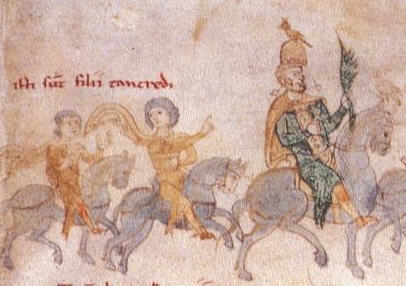



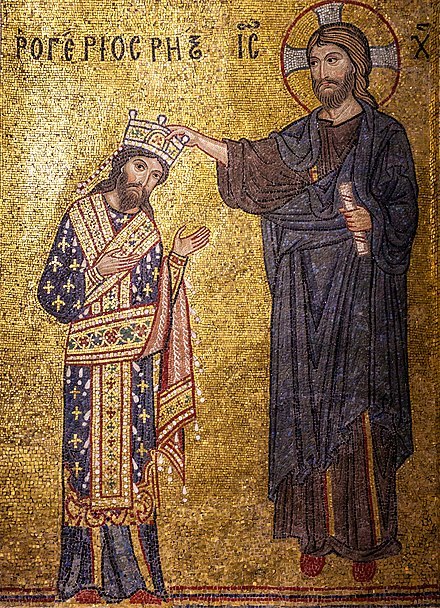

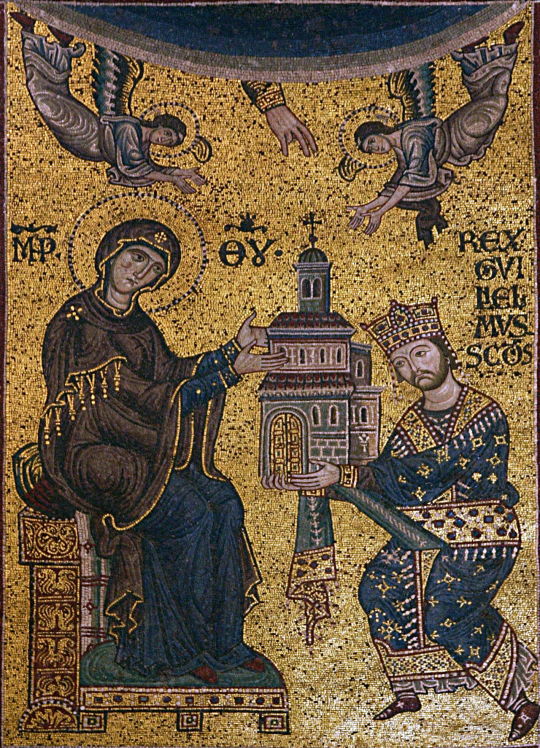



The Bastard Kings and their families
This is series of posts are complementary to this historical parallels post from the JON SNOW FORTNIGHT EVENT, and it's purpouse to discover the lives of medieval bastard kings, and the following posts are meant to collect portraits of those kings and their close relatives.
In many cases it's difficult to find contemporary art of their period, so some of the portrayals are subsequent.
1) Tancred I of Sicily ( 1138 – 1194), son of Roger III of Apulia and Emma of Lecce; with his sons Roger III of Sicily (1175 –1193) and William III of Sicily (c. 1186 – c. 1198)
2) His wife, Sibylla of Acerra (1153–1205), mother of Roger III and William III
3) His brother-in-law, Richard of Acerra (d. 1196)
4)His father, Roger III of Apulia (1118 – 1148), son of Roger II of Sicily and his wife Elvira of Castile
5) His grandfather, Roger II of Sicily (1095– 1154), son of Roger I of Sicily and his wife Adelaide del Vasto
6) His uncle, William I of Sicily (1120/1121 – 1166), son of Roger II of Sicily and his wife Elvira of Castile
7) His cousin, William II of Sicily (1153 – 1189), son of William I of Sicily and his wife Joan of England
8) His aunt, Constance I of Sicily (1154–1198), daughter of Roger II of Sicily and his wife Beatrice of Rethel
9) His uncle, Holy Roman Emperor Henry VI (1165 – 1197), son of Holy Roman Emperor Frederick I and his wife Beatrice I of Burgundy; and Constance I of Sicily's husband
10) His cousin, Holy Roman Emperor Frederick II (1194 – 1250), son of Constance I of Sicily and Holy Roman Emperor Frederick I
#jonsnowfortnightevent2023#asoiaf#a song of ice and fire#day 10#echoes of the past#historical parallels#medieval bastard kings#bastard kings and their families#tancred i of sicily#roger iii of sicily#william iii of sicily#sibylla of acerra#richard of acerra#roger iii of apulia#roger ii of sicily#william i of sicily#william ii of sicily#constance i of sicily#holy roman emperor henry vi#holy roman emperor frederick ii#canonjonsnow
6 notes
·
View notes
Text


MEN THINK ABOUT ROMAN EMPIRE. WOMEN THINK ABOUT HOLY ROMAN EMPIRE
JUDITH OF BAVARIA (797-843) — Daughter of Count Welf I of Bavaria, Judith was a Carolingian Empress as the second wife of Louis I the Pious. Mother of Gisela and Charles the Bald, she foght for both her own influence at court and for the succession of her son over the claims of his elder half-brothers, the sons of Louis I from his first marriage. Charles became the Emperor in 875, after the death of Louis II, his nephew and a son of his half-brother Lothair / fancast: Annabel Scholey
MARIA OF AUSTRIA (1528-1603) — Daughter of Charles V, Holy Roman Emperor, and Isabella of Portugal. She served as Regent of Spain both jointly with her husband, Maximilian (before their accession to the imperial throne), and in person, for her father, and brother, Philip II. Her children include two Holy Roman Emperors, Rudolf II and Matthias, over whom she held great influence, and queens consorts of Spain, and France / fancast: Olivia Cooke
EMPRESS MAUD (1102-1167) — Daughter of Henry I of England and Matilda of Scotland. Her first marriage to the Holy Roman Emperor, Henry V, gave her the title under which she came down into history, and was a source of great pride to Maud. Rightful heiress of Henry I, she confronted her cousin, King Stephen, in the civil war, known as the Anarchy, fighting ferociously for her rights. She failed in this for herself but won for her son Henry, who became king and established the Plantagenet dynasty in England / cast: Alison Pill in The Pillars of the Earth (2010)
MARIA THERESA (1717-1780) — She succeded her father Charles VI as the ruler of Habsburg monarchy in 1740, and devoutedly defended it against its enemies in the War of Austrian Succession and the Seven Year's War. Wife of the Holy Roman Emperor, Francis I, she was a forceful personality and a competent ruler herself, reigning first in her own right, and later, jointly with her son Empreror Joseph II. Her children include two Holy Romam Emperors (Joseph II and Leopold II), queens consorts of Naples ans Sicily, and France / cast: Marie-Luise Stockinger in Maria Theresia (2017)
#historyedit#judith of bavaria#maria of austria#empress maud#empress matilda#maria theresa#maria theresia#perioddramaedit#history#women in history#perioddramasource#onlyperioddramas#tusereliza#userbennet#usermina#weloveperioddrama#cortegiania#perioddramagif#gifshistorical#my edit#*i have literally zero idea what is this lmao* but i really like it idk
124 notes
·
View notes
Text
The Erfurt latrine disaster occurred on 26 July 1184, when Henry VI, King of Germany (later Holy Roman Emperor), held a Hoftag (informal assembly) at the cathedral provostry in Erfurt. The combined weight of the assembled nobles caused the wooden second story floor of the building to collapse and most of them fell through into the latrine cesspit below the ground floor, where about 60 of them drowned in liquid excrement. This event is called the Erfurter Latrinensturz (lit. 'Erfurt latrine fall') in several German sources.
33 notes
·
View notes
Text
HOLY GOD
LOOK WHAT I FOUND IN MY GOOGLE DOCS (tw religion)
IT'S CATHOLIC WE DIDN'T START THE FIRE
(starting from 30s-300s, progresses as we move on)
Jesus Christ, Christmas Day, Theodosius, Catholicism here to stay
Jerome’s bible, Council of Trent, and Leo is the pope
Rome is sacked, Temples attacked, Emperor, religion
Old testament, New Testament, Monasteries are a-go
Pope John, Pandecks, Belisarius, what’s next
Pope Gregory, makes a chant, freeing slaves (hooray)
Then the Pope sends Augustine, England he has to clean
Turn it Catholic, then get out, CATHOLICISM, goodbye
We didn’t start the fire
It was always burning since the world’s been turning
We didn’t start the fire
No, we didn’t light it but we tried to fight it
Boniface, Lindsifarne, Holy Roman Emperors
Missionaries, Assisi, Franciscan monks
Catherine of Siena, Antipope, Joan of Arc turned into smoke
Now she’s a martyr, makes me sick, Jan Hus is a heretic
Pope Pius, no slave trade, wanna go on a crusade? (no)
Michelangelo is painting on the walls
Martin Luther, indulgences, writes the 95 Theses
Nail ‘em down, hope it works, Schism in the Catholic Church!
We didn’t start the fire
It was always burning since the world’s been turning
We didn’t start the fire
No, we didn’t light it but we tried to fight it
King Henry VIII, shocks all the nation, tries to get a divorce, now excommunication
Head of the church, so he’ll search, for another wife
Seems that he’s through and- what’s his daughter doin’
Burning people, Catholic Church steeple, heretics galore
Our Lady of Guidance, England shows defiance
Papal bulls, prisoners, Church of Manila
Missionary, in China, Philip launched an Armada
1600, the Pope has a nice cup of coffee
Shimabara rebellion, diocese is Canadian
Requiem, anti-clericalism, Joseph Haydn composin’
Pope Pius VI, imprisoned, hey
What else do I have to say!
We didn’t start the fire
It was always burning since the world’s been turning
We didn’t start the fire
No, we didn’t light it but we tried to fight it
18 notes
·
View notes
Text
Ages of English Princesses at First Marriage
I have only included women whose birth dates and dates of marriage are known within at least 1-2 years, therefore, this is not a comprehensive list. The average age at first marriage among these women was 16.
This list is composed of princesses of England when it was a sovereign state, prior to the Acts of Union in 1707.
Eadgyth (Edith) of England, daughter of Edward the Elder: age 20 when she married Otto the Great, Holy Roman Emperor in 930 CE
Godgifu (Goda) of England, daughter of Æthelred the Unready: age 20 when she married Drogo of Mantes in 1024 CE
Empress Matilda, daughter of Henry I: age 12 when she married Henry, Holy Roman Emperor, in 1114 CE
Marie I, Countess of Boulogne, daughter of Stephen of Blois: age 24 when she was abducted from her abbey by Matthew of Alsace and forced to marry him, in 1136 CE
Matilda of England, daughter of Henry II: age 12 when she married Henry the Lion in 1168 CE
Eleanor of England, daughter of Henry II: age 9 when she married Alfonso VIII of Castile in 1170 CE
Joan of England, daughter of Henry II: age 12 when she married William II of Sicily in 1177 CE
Joan of England, daughter of John Lackland: age 11 when she married Alexander II of Scotland in 1221 CE
Isabella of England, daughter of John Lackland: age 21 when she married Frederick II, Holy Roman Emperor, in 1235 CE
Eleanor of England, daughter of John Lackland: age 9 when she married William Marshal, Earl of Pembroke in 1224 CE
Margaret of England, daughter of Henry III: age 11 when she married Alexander III of Scotland in 1251 CE
Beatrice of England, daughter of Henry III: age 17 when she married John II, Duke of Brittany in 1260 CE
Eleanor of England, daughter of Edward I: age 24 when she married Henry III, Count of Bar in 1293 CE
Joan of Acre, daughter of Edward I: age 18 when she married Gilbert de Clare, Earl of Gloucester in 1290 CE
Margaret of England, daughter of Edward I: age 15 when she married John II, Duke of Brabant in 1290 CE
Elizabeth of Rhuddlan, daughter of Edward I: age 15 when she married John I, Count of Holland in 1297 CE
Eleanor of Woodstock, daughter of Edward II: age 14 when she married Reginald II, Duke of Guelders in 1332 CE
Joan of the Tower, daughter of Edward II: age 7 when she married David II of Scotland in 1328 CE
Isabella of England, daughter of Edward III: age 33 when she married Enguerrand VII, Lord of Coucy in 1365 CE
Mary of Waltham, daughter of Edward III: age 16 when she married John IV, Duke of Brittany in 1361 CE
Margaret of Windsor, daughter of Edward III: age 13 when she married John Hastings, Earl of Pembroke in 1361 CE
Blanche of England, daughter of Henry IV: age 10 when she married Louis III, Elector Palatine in 1402 CE
Philippa of England, daughter of Henry IV: age 12 when she married Eric of Pomerania in 1406 CE
Elizabeth of York, daughter of Edward IV: age 20 when she married Henry VII in 1486 CE
Cecily of York, daughter of Edward IV: age 16 when she married Ralph Scrope in 1485 CE
Anne of York, daughter of Edward IV: age 19 when she married Thomas Howard in 1494 CE
Catherine of York, daughter of Edward IV: age 16 when she married William Courtenay, Earl of Devon in 1495 CE
Margaret Tudor, daughter of Henry VII: age 14 when she married James IV of Scotland in 1503 CE
Mary Tudor, daughter of Henry VII: age 18 when she married Louis XII of France in 1514 CE
Mary I, daughter of Henry VIII: age 38 when she married Philip II of Spain in 1554 CE
Elizabeth Stuart, daughter of James VI & I: age 17 when she married Frederick V, Elector Palatine in 1613 CE
Mary Stuart, daughter of Charles I: age 10 when she married William II, Prince of Orange in 1641 CE
Henrietta Stuart, daughter of Charles I: age 17 when she married Philippe II, Duke of Orleans in 1661 CE
Mary II of England, daughter of James II: age 15 when she married William III of Orange in 1677 CE
Anne, Queen of Great Britain, daughter of James II: age 18 when she married George of Denmark in 1683 CE
28 notes
·
View notes
Text
AU Master List
This is a list of all the AUs I’ve posted and will be updated as more get posted. Please consult this list before making a request.
Henry VIII and his six wives as Anglo-Saxons.
Anne Boleyn marries Francis I.
Anne Boleyn marries Henry Percy and James Butler.
Anne Boleyn becomes the second wife of Charles V.
Modern Boleyn family + Elizabeth I
All of Anne Boleyn’s historical pregnancies are daughters.
Anne Boleyn and Anne of Cleves become friends.
Anne Boleyn and Catherine of Aragon become allies after Henry starts finding a way out of their marriage.
Elizabeth I marries Eric XIV of Sweden
Henry VIII marries Claude of France instead of Catherine of Aragon.
Henry VIII and Anne Boleyn have more living children after Elizabeth
George and Jane Boleyn unexpectedly get pregnant with twins.
Love triangle between Anne Boleyn, Henry, Duke of York and the son of Arthur, Prince of Wales and Catherine of Aragon
Anne Boleyn marries Henry Percy.
Anne Boleyn marries the son of Arthur, Prince of Wales & Catherine of Aragon.
Anne Boleyn and Henry VIII are each other’s second spouses.
Modern Tudor family.
George and Jane Boleyn adopt Katheryn Howard.
Anne Boleyn marries the twin brother of Mary I, but has an affair with Henry VIII.
All of Henry VIII’s wives outlive him and make peace with each other.
All of Catherine of Aragon’s, Anne Boleyn’s, and Jane Seymour’s pregnancies are carried to term and healthy, but they’re all daughters.
Catherine of Aragon, Anne Boleyn, and Jane Seymour are the respective wives of Arthur, Henry, and Edmund Tudor.
Anne Boleyn marries Henry, Duke of Cornwall.
Anne Boleyn and Henry VIII marry in 1527 and have lots of healthy children.
Anne Boleyn marries the son of Arthur, Prince of Wales & Catherine of Aragon. (alternate version)
The son of Anne Boleyn and James Butler falls in love with Mary I.
Anne Boleyn is actually a witch.
Anne Boleyn is exiled and meets Catherine of Aragon again.
Anne Boleyn marries Charles Brandon after Henry VIII divorces her.
Marguerite of Angoulême is Henry VIII’s first wife and Anne Boleyn is his second.
Modern AU where Anne Boleyn falls in love with Francis III, Duke of Brittany.
Anne Boleyn raises Elizabeth I in a French convent.
Modern AU where Anne Boleyn and Catherine of Aragon are a couple.
George Boleyn isn’t executed and raises Elizabeth I.
Mary I gives birth to a daughter in 1555.
Mary I marries Phillip, Duke of Palatinate-Neuburg
Henry VIII divorces Anne Boleyn in 1536, but then the two have an affair after he marries Jane Seymour.
Henry VII marries Catherine of Aragon.
Mary Tudor marries Charles V.
Anne Boleyn marries Ferdinand I, Holy Roman Emperor.
Anne Boleyn dies from her miscarriage in 1536.
Katheryn Howard gives birth to a son in 1541.
All of Henry VIII’s children with Catherine of Aragon and Anne Boleyn survive to adulthood.
Francis I and Eleanor of Austria have a son.
Kathryn Parr has a son with Henry VIII.
Mary Tudor becomes Queen regnant of England and Queen consort of France.
All of Henry VIII’s and Catherine of Aragon’s children survive to adulthood.
Catherine of Aragon is Queen regnant of Spain.
Elizabeth I marries Robert Dudley during Edward VI’s reign.
Catherine of Aragon lives a couple of years longer.
Kathryn Parr has a daughter with Henry VIII.
Anne Boleyn is Queen regnant of England.
Mary I is the second wife of Charles V.
All of Henry VII and Elizabeth of York’s children survive to adulthood.
22 notes
·
View notes
Photo

Constance I (2 November 1154 – 27 November 1198) was reigning Queen of Sicily from 1194–98, jointly with her spouse from 1194 to 1197, and with her infant son Frederick II, Holy Roman Emperor, in 1198, as the heiress of the Norman kings of Sicily. She was also Holy Roman Empress and later Dowager by marriage to Henry VI, Holy Roman Emperor.
When she was young, as the sole heir to the throne of Sicily, she didn't marry until she was 30 because of an ominous prophecy; shortly after becoming empress she was involved in the succession war against her illegitimate nephew King Tancred of Sicily for the Sicilian throne, during which, rarely for an empress, she was captured during such an offensive campaign, though finally without danger she escaped. In the history of Holy Roman Empire only two empresses had ever been captured, the other being her mother-in-law Empress Beatrice.
Shortly before ascending the Sicilian throne, at the advanced age of 40, she gave birth to her only child – Frederick, thus continuing the bloodlines of both Holy Roman Empire and Kingdom of Sicily.
After the death of her husband, she gave up the throne of the Holy Roman Empire in the name of her son, despite him being King of the Romans, in favor of her younger brother-in-law Philip of Swabia, making her son merely King of Sicily; meanwhile she still claimed herself Holy Roman Empress Dowager. Passing away merely one year later, she entrusted her young son to Pope Innocent III.
18 notes
·
View notes
Text

Erfurt latrine disaster-
In July 1184, Henry VI, King of Germany (later Holy Roman Emperor), held court at a Hoftag in the Petersberg Citadel in Erfurt. On the morning of 26 July, the combined weight of the assembled nobles caused the wooden second story floor of the building to collapse and most of them fell through into the latrine cesspit below the ground floor, where about 60 of them drowned in liquid excrement. This event is called Erfurter Latrinensturz (lit. 'Erfurt latrine fall') in several German sources.
Read More
12 notes
·
View notes
Text
KTAW: Day 4—Origins/France
So the reason my entries for KTAW are coming in late is 100% the fault of the French lineage I created for Joëlle, which took days upon days upon DAYS of research. As such it involves a lot of real historical elements; however, if the first instance of the character’s name is bolded and does not have a link, they’ve been invented by me (Choices characters excluded). I hope you enjoy the fruits of my labor!
Tagging @kiaratheronappreciationweek and the gracious hosts @lizzybeth1986 and @sazanes!
~ * ~ * ~ * ~ * ~ * ~ * ~
On her mother’s side, Kiara is descended from Syphax and my ACoR MC Tamara, who after the events of the series traveled back to Gaul to rebuild their tribe
Tamara was from the Vidubagaud, the name I invented—which loosely translated means “wood fighters”—for the fourth pagi of the Helvetii, who in my HC later formed in part the bagaudae from which the House of Blois descends
Touraine—the traditional name of the French region from which Joëlle hails—first passed from their house in 1044 CE when Count Theobald III was forced to exchange the county for his freedom, but he did later gain Champagne
The House of Blois ended when Queen Joan I of Navarre married the king of France, and Champagne was absorbed into the royal domain
In 1326 CE as a result of her affair in France with Roger Mortimer, Joan’s daughter and English queen Isabella of France gave birth to a bastard son named Cyril just before returning to England
Cyril was left to be raised by his uncle the French king Charles IV, who came to consider the boy his own son, legitimizing him as a prince du sang (“prince of the blood”) and giving him the surname “du Blois”
The two-year-old became helpful in securing his cousin King Phillip VI’s claim to throne after Charles IV’s passing, as he was the latter’s nearest male blood relative next to King Edward III of England
Though Cyril stayed unacknowledged as a legitimate heir to the English throne, he was still a threat to his older half-brother’s reign, and thus their mother Isabella was not permitted to visit him
While he was kept out of courtly life to discourage any desire for the throne and for his own safety, Cyril was educated alongside Phillip VI’s heirs as the king’s ward
When Cyril reached 14, the War of the Breton Succession began, and he was sent to attend the University of Paris, where he studied at the College of Navarre which his grandmother had founded
Upon his graduation with a Master of Arts, Cyril came back to court and was granted the County of Champagne as an appanage (Touraine having become a royal dukedom)
Centuries later in 1533 CE, while attending the wedding of his half-sister Catherine de Medici to Prince Henry II, Alessandro de' Medici fell in love with Sabrina du Blois and eloped with her back to Florence
Their marriage was a direct violation of Alessandro’s engagement contract to the Holy Roman Emperor’s daughter, a contract which had been signed by his uncle Pope Clement VII
Seeking the support of the Papal States in his war for Italy against Spain, King Francis I annulled the marriage, only for the Pope to shortly die afterwards
Sabrina initially refused to return to France until she learned that her former husband had already had a child with his favorite mistress; unfortunately, she herself was already pregnant, and she died giving birth to their son Thibault in 1534 CE
Her father the Count Champagne sought the king’s approval to have his grandson legitimized, arguing he was conceived while their marriage was still valid, but the scorned Francis I refused
The count didn’t give up there and instead tried to ingratiate Thibault with other members of the royal family, specifically his aunt and the new queen Catherine under the guise of needing a mother’s guidance
However, though she came to adore her little nephew and took him in once his grandfather passed, it is her husband’s mistress who held sway rather than her, and thus Champagne became absorbed into the royal domain once more
Seeking to regain his title and his family’s honor, Thibault joined the navy and became a maritime captain, but he set his sights on the east rather than the west
At the age of 19, he was put in charge of the raid of the tidal island south of Pontios (the island on which Cordonia is located) in 1553 CE by his request, which was only granted as the Ottoman-French forces believed the island was uninhabited
This was an incorrect assumption, as after the Mali Empire’s capital was invaded in 1546 CE, members of the Keita Imperial Dynasty had fled to Pontios along with a good portion of their people and settled on its southern tidal island, where they built the hidden city Tawunta (“protected with a charm”)
Upon finding Tawunta, Thibault fell for both the beauty of the primeval temperate rainforest and the beauty of the mansa’s daughter Fatoumata
With Cordonia in the midst of a civil war in which Ottoman is involved, Tawunta’s mansa accepted Thibault’s proposal for Fatoumata’s hand, and thus the island became the French colony Cormery Isle
This success lead Thibault to be legitimized and made the governor of the new colony, and he was later invited to the French court along with his family by Catherine in 1563 CE, who as the Queen Mother to King Charles IX now had great authority
Her invitation was part of her attempt to revive loyalty to the crown, and Thibault impressed the court with the riches of Cormery Isle along with his beautiful wife, who is dubbed la princesse noire (“the black princess”)
Catherine was finally able to grant the County of Champagne to her nephew and former ward, and his son Ebrima (known in French as Abraham) later went to Paris to be educated
In order to help further establish the Peace of Saint-Germain-en-Laye, Lord Abraham is sent to Navarre’s royal court as a suitor for Catherine de Bourbon; she showed no interest in him, so he wound up becoming good friends with her brother Henry III instead
In the wake of the St. Bartholomew’s Day Massacre, Abraham helped to ferry many Protestant Frenchmen to Cormery Isle and eventually assisted his friend in escaping the French court in 1576 CE
When this was discovered, Thibault’s countship and governorship were both revoked, as he stood accused of aiding and abetting his son’s crime
However, 13 years later when Henry nominally became King Henry IV of France, he granted Abraham the Duchy of Touraine for his steadfast friendship, recognizing both him and his father as princes du sang (the highest rank in court after the immediate family of the king)
Both Henry and Abraham had to battle to claim their lands, but Paris could not be taken; it was Abraham who eventually convinced Henry to convert to Catholicism with the famous phrase, “Paris vaut bien une messe,” or “Paris is well worth a Mass.”
With the new influx of French settlers along with Cormery Isle now being overseen by the older/larger French colony Auvernal, Fatoumata led most of her people to accept her son’s offer to settle in his new duchy, and thus Touraine became home to the first predominantly Black settlement in France
Though they had the king’s favor, the court did not look too fondly upon House du Blois, mostly due to jealously-fueled racism; their admiration of Fatou turned to scorn now that she was their equal/better, and her new nickname became an insult: la princesse grenouille (“the frog princess”)¹
The family continued to have the favor of the crown even after the passing of Henry IV, as Thibault’s youngest granddaughter Joëlle (the namesake of Kiara’s mother) was a favourite and beneficiary of Marie de’ Medici, the regent of France
Unfortunately, they lost much of their influence when she was unseated in 1617 CE and exiled to Loire by her son King Louis XIII, whose principal minister Cardinal Richelieu ordered all fortified castles razed in the same year slavery was made legal, thus weakening the French nobility’s ability to fight back
Working with the Duke of Brittany, the next Duke of Touraine managed to help Marie escape her exile and joined her in the second war against her son; thought they lost, they were forgiven by the king
House du Blois protested greatly against France’s expansion of their slave trade; in response to the Code Noir, they took up the fleur-de-lis² as their charge and regularly bought slaves from the colonies to be freed once they set foot on French soil
By the French Revolution, the Duchy of Touraine had been passed down to a cadet branch, the House Condé, who in pursuit of their goal to abolish slavery managed to keep their title (and their heads) by joining the Third Estate’s National Assembly
Unlike other nobles, their family did not seek out advantageous matches but rather matches within their community, and as such remained visibly Black into modern day (with Kiara’s maternal grandfather Aaron Condé being the current duke)
Notes
This nickname—coupled with how Fatou was heavily involved in rebuilding Tours following the French Wars of Religion—is why in my HC, she serves as one of the inspirations for the Disney Princess Tiana’s character.
The Code Noir stated that runaway slaves would be branded with the fleur-de-lis; it was chosen by House du Blois to openly declare their stance against slavery and because it would be considered an affront to the monarchy, as the fleur-de-lis has been historically used by French royalty.
#playchoices#the royal romance#trr#kiara theron#kiaratheronappreciationweek#ktaw#ktaw day 4#head canons#aaron’s surname from kiki’s previously posted character page has been changed to reflect joelle’s new ethnicity (fula->mandinka)
8 notes
·
View notes
Text
In July 1184, Henry VI, King of Germany (later Holy Roman Emperor), held court at a Hoftag in the Petersberg Citadel in Erfurt. On the morning of 26 July, the combined weight of the assembled nobles caused the wooden second story floor of the building to collapse and most of them fell through into the latrine cesspit below the ground floor, where about 60 of them drowned in liquid excrement. This event is called Erfurter Latrinensturz (lit. 'Erfurt latrine fall') in several German sources.
happy anniversary to this
#garbageposting#i am scheduling this in april and have no idea if it's gonna post at the right time#gay piracy
11 notes
·
View notes
Text
Events 5.25 (before 1960)
567 BC – Servius Tullius, the king of Rome, celebrates a triumph for his victory over the Etruscans.
240 BC – First recorded perihelion passage of Halley's Comet.
1085 – Alfonso VI of Castile takes Toledo, Spain, back from the Moors.
1420 – Henry the Navigator is appointed governor of the Order of Christ.
1521 – The Diet of Worms ends when Charles V, Holy Roman Emperor, issues the Edict of Worms, declaring Martin Luther an outlaw.
1644 – Ming general Wu Sangui forms an alliance with the invading Manchus and opens the gates of the Great Wall of China at Shanhaiguan pass, letting the Manchus through towards the capital Beijing.
1659 – Richard Cromwell resigns as Lord Protector of England following the restoration of the Long Parliament, beginning a second brief period of the republican government called the Commonwealth of England.
1660 – Charles II lands at Dover at the invitation of the Convention Parliament, which marks the end of the Cromwell-proclaimed Commonwealth of England, Scotland and Ireland and begins the Restoration of the British monarchy.
1738 – A treaty between Pennsylvania and Maryland ends the Conojocular War with settlement of a boundary dispute and exchange of prisoners.
1763 – First issue of Norske Intelligenz-Seddeler, the first regular Norwegian newspaper (1763–1920).
1787 – After a delay of 11 days, the United States Constitutional Convention formally convenes in Philadelphia after a quorum of seven states is secured.
1798 – United Irishmen Rebellion: Battle of Carlow begins; executions of suspected rebels at Carnew and at Dunlavin Green take place.
1809 – Chuquisaca Revolution: Patriot revolt in Chuquisaca (modern-day Sucre) against the Spanish Empire, sparking the Latin American wars of independence.
1810 – May Revolution: Citizens of Buenos Aires expel Viceroy Baltasar Hidalgo de Cisneros during the "May Week", starting the Argentine War of Independence.
1819 – The Argentine Constitution of 1819 is promulgated.
1833 – The Chilean Constitution of 1833 is promulgated.
1865 – In Mobile, Alabama, around 300 people are killed when an ordnance depot explodes.
1878 – Gilbert and Sullivan's comic opera H.M.S. Pinafore opens at the Opera Comique in London.
1895 – Playwright, poet and novelist Oscar Wilde is convicted of "committing acts of gross indecency with other male persons" and sentenced to serve two years in prison.
1895 – The Republic of Formosa is formed, with Tang Jingsong as its president.
1914 – The House of Commons of the United Kingdom passes the Home Rule Bill for devolution in Ireland.
1925 – Scopes Trial: John T. Scopes is indicted for teaching human evolution in Tennessee.
1926 – Sholom Schwartzbard assassinates Symon Petliura, the head of the government of the Ukrainian People's Republic, which is in government-in-exile in Paris.
1933 – The Walt Disney Company cartoon Three Little Pigs premieres at Radio City Music Hall, featuring the hit song "Who's Afraid of the Big Bad Wolf?"
1935 – Jesse Owens of Ohio State University breaks three world records and ties a fourth at the Big Ten Conference Track and Field Championships in Ann Arbor, Michigan.
1938 – Spanish Civil War: The bombing of Alicante kills 313 people.
1940 – World War II: The German 2nd Panzer Division captures the port of Boulogne-sur-Mer; the surrender of the last French and British troops marks the end of the Battle of Boulogne.
1946 – The parliament of Transjordan makes Abdullah I of Jordan their Emir.
1953 – Nuclear weapons testing: At the Nevada Test Site, the United States conducts its first and only nuclear artillery test.
1953 – The first public television station in the United States officially begins broadcasting as KUHT from the campus of the University of Houston.
1955 – First ascent of Mount Kangchenjunga: On the British Kangchenjunga expedition led by Charles Evans, Joe Brown and George Band reach the summit of the third-highest mountain in the world (8,586 meters); Norman Hardie and Tony Streather join them the following day.
0 notes
Text
Rivalité de François Iier et de Charles-Quint /
M. Mignet.
Description
Tools
Cite thisExport citation fileMain AuthorMignet, (François-Auguste-Marie-Alexis), M. 1796-1884.Language(s)French PublishedParis : Didier, 1875.
SubjectsCharles > Charles / V, > Charles / V, / Holy Roman Emperor, > Charles / V, / Holy Roman Emperor, / 1500-1558
Francis > Francis / I, > Francis / I, / King of France, > Francis / I, / King of France, / 1494-1547.
Holy Roman Empire > Holy Roman Empire / History > Holy Roman Empire / History / Charles V, 1519-1556.
France > France / History > France / History / Francis I, 1515-1547.
History
Physical Description2 v. ; 23 cm.
both volumes found in Harvard Library
Etat politique de l'Italie etde la France vers la fin duquinzième siècle . Droit desuccession au royaume deNaples et au duché deMilan , ré clamé par CharlesVIII , comme héritier de lamaison d'Anjou et par LouisXII comme héritier directdes Visconti . Expédition deCharles VIII en 1494.-Conquête rapide et pertenon moins prompte duroyaume de Naples .Avénement au trône deLouis XII , qui prend le titrede duc de Milan et de roi deNaples . - Invasion , en1499 , de la Lombardiemilanaise , concertée avecles Vénitiens , qui étendentleurs possessions de terreferme jusqu'à la rive gauchede l'Adda . — Louis XII ,affermi dans le duché deMilan , suit une dan gereusepolitique en agrandissantdans l'Italie centrale lapuissance territoriale despapes Alexandre VI et JulesII , et en introduisant tour àtour dans l'Italie inférieure leroi Ferdinand d'Aragon , etdans la haute Italiel'empereur Maximilien . —(13, 1)
Accord , en 1501 , des roisLouis XII et Ferdinandd'Aragon pour conquérir etpartager le royaume deNaples , qui reste pris toutentier par Ferdinand , en1503 . - Ligue de Cambrai ,en 1508 , entre Louis XII ,l'empereur Maximi lien , leroi Ferdinand , le pape JulesII , qui dépouillent de leurspos sessions italiennes lesVénitiens vaincus à labataille d'Agnadel . —Sainte Ligue qu'ourdissent ,en 1511 , contre Louis XII ,le pape Jules II , le roid'Aragon et de NaplesFerdinand , le roi d'Angleterre Henri VIII , quesecondent les troupes descantons suisses et àlaquelle se joint l'empereurMaximilien pour expulserles Françai
1 note
·
View note
Text
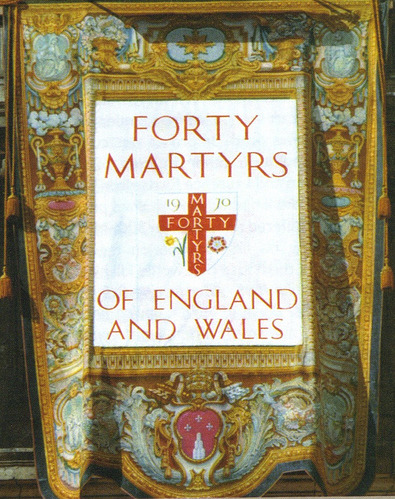
SAINTS DECEMBER 01
St. Edmund Campion. Edmund was born in London, the son of a bookseller. He was raised a Catholic, given a scholarship to St. John's College, Oxford, when fifteen, and became a fellow when only seventeen. His brilliance attracted the attention of such leading personages as the Earl of Leicester, Robert Cecil, and even Queen Elizabeth. He took the Oath of Supremacy acknowledging Elizabeth head of the church in England and became an Anglican deacon in 1564. Doubts about Protestantism increasingly beset him, and in 1569 he went to Ireland where further study convinced him he had been in error, and
he returned to Catholicism. Forced to flee the persecution unleashed on Catholics by the excommunication of Elizabeth by Pope Pius V, he went to Douai, France, where he studied theology, joined the Jesuits, and then went to Brno, Bohemia, the following year for his novitiate. He taught at the college of Prague and in 1578 was ordained there. He and Father Robert Persons were the first Jesuits chosen for the English mission and were sent to England in 1580. His activities among the Catholics, the distribution of his rations at the University Church in Oxford, and the premature publication of his famous Brag (which he had written to present his case if he was captured) made him the object of one of the most intensive manhunts in English history. He was betrayed at Lyford, near Oxford, imprisoned in the Tower of London, and when he refused to apostatize when offered rich inducements to do so, was tortured and then hanged, drawn, and quartered at Tyburn on December 1 on the technical charge of treason, but in reality because of his priesthood. He was canonized by Pope Paul VI in 1970 as one of the forty English and Welsh Martyrs.
Bl. Alexander Briant, 1581 A.D. Missionary and martyr, one of the English priests slain in the reign of Queen Elizabeth I. Alexander was born in Somerset, England, circa 1556 , and entered Oxford University at a young age. He was called "the beautiful Oxford youth" because of his handsome appearance and
the radiance of his holiness. Alexander converted to Catholicism at Oxford and met Richard Holtby, following Holtby to the English seminary college at Reims, France. He was ordained a priest there on March 29, 1578. Returning to England, Alexander worked in Somerset and was caught up in a search by British authorities in April 1581. Taken to the Tower of London, he was subjected to inhuman tortures but did not reveal the names of other priests. He also wrote to the Jesuit Fathers, asking permission to join. He was accepted. In November 1581, he was condemned to death by an English court. Again Alexander suffered hideous tortures and died on December 1, 1581, at the age of twenty-five.
Bl. John Beche, 1539 A.D Martyr of England and a friend of St. John Fisher and St. Thomas More. John was abbot of Coichester Abbey. Benedictine, he received a doctorate from Oxford in 1515. He took the Oath of Supremacy in 1534, but then saw his own abbey being plundered. The deaths of Sts. John Fisher and Thomas More horrified him as well. When he refuted King Henry VIII’s right to suppress the English monasteries, he was arrested for treason and hanged, drawn, and quartered at Colchester. John was beatified in 1895.
Bl. Richard Langley, 1586 A.D. English martyr. A member of the gentry, he was born at Grimthorpe, where he had extensive estates, as he did in Riding. He was arrested for giving shelter to Catholic priests and hanged, drawn, and quartered at York on December 1. He was beatified in 1929.
St. Natalia of Nicomedia, Roman Catholic Martyr of Nicomedia, modem Turkey She cared for Christian prisoners awaiting martyrdom during the persecutions of Emperor Diocletian.Dec 1
Bl. Anwarite Nangapeta, Roman Catholic Nun. She was killed during Congo's civil war at the Simba revolt in 1964 by a soldier, Colonel Pierre Colombe, when she resisted his attempted rape.Dec. 1
Blessed Charles Eugène de Foucauld was a French Roman Catholic religious and priest living among the Tuareg in the Sahara in Algeria. He was assassinated in 1916 outside the door of the fort he built for the protection of the Tuareg. Dec.1
St. Grwst, 7th century. A Welsh saint honored at Llanrwst, Clwyd, Wales.
ST. NAHUM, PROPHET
St. Nahum the Prophet St. Nahum the Prophet Around 612 BC, the minor prophet Nahum prophesied against Nineveh, the capital of the Assyrian empire. Assyria had conquered and cruelly ruled much of the Middle East for 300 years, and in 622 conquered the northern Kingdom of Israel and deported its people. Dec 1
St. Eligius, Roman Catholic layman was very generous to the poor, ransomed many slaves, and built several churches and a monastery at Solignac. Feastday: December 1 https://www.vaticannews.va/en/saints/12/01/st--eligius--bishop-of--noyon.html
0 notes
Text
THIS DAY IN GAY HISTORY
based on: The White Crane Institute's 'Gay Wisdom', Gay Birthdays, Gay For Today, Famous GLBT, glbt-Gay Encylopedia, Today in Gay History, Wikipedia, and more …

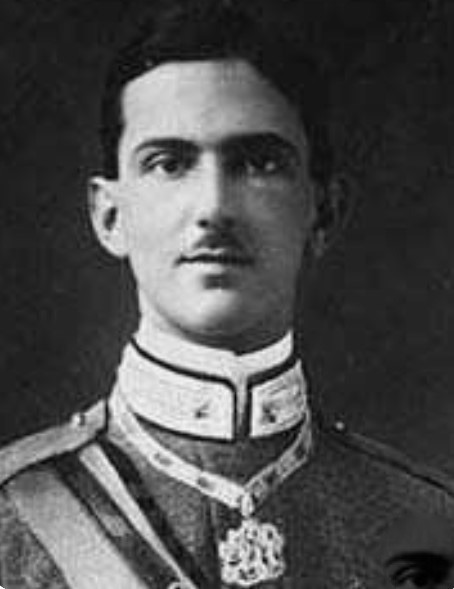
1904 – Umberto II of Italy, born Umberto Nicola Tommaso Giovanni Maria di Savoia, occasionally anglicized as Humbert II (d.1983), was the last King of Italy for slightly over a month, from 9 May 1946 to 12 June 1946. He was nicknamed the King of May.
Son of King Victor Emmanuel, as the Prince of Piedmont, he was educated to a military career and in time became the commander in chief of the Northern Armies, and then of the Southern ones. However, his role was merely formal, the de facto command belonging to Benito Mussolini. By mutual agreement, Umberto and Mussolini always kept a distance.
After the end of WWII, King Victor Emmanuel abdicated formally in favor of his son Umberto in 9 May 1946 under the threat of an upcoming referendum to eliminate the monarchy.
Umberto served as king for 34 days. He and his wife were both young and cultivated, and thus presented a stark contrast to Victor Emmanuel. It was to no avail, however—a decisive majority voted to make Italy a republic. Having promised to accept the election results, Umberto accepted the defeat, urging his now-former subjects to serve the new republic. The monarchy formally ended on 12 June 1946, and Umberto left the country.
Umberto and his young wife separated in exile; it had been an arranged marriage, following a long tradition of royal families.
Some academics have explored Umberto's possible homosexuality. As early as the 1920s, Mussolini had collected a dossier on his private life for purposes of blackmail. Certainly during the war, newspapers asserted that Umberto was homosexual, and information continued to be spread in the lead-up to the post-war referendum on the monarchy in the hope of influencing the outcome. It is, however, unclear to what extent such rumours could be substantiated.
Umberto's custom of giving a fleur-de-lis made of precious stones to favoured young officials in his entourage was well known, and Umberto's lovers may have included Luchino Visconti and Jean Marais, and a former army lieutenant who published details of Umberto's advances to him.
King Umberto lived for 37 years in exile, in Cascais in Portugal. He never set foot in his native land again.


1189 – On this day, William Longchamp (d.1197), sometimes known as William de Longchamp or William de Longchamps, a medieval Lord Chancellor, and Chief Justiciary, was appointed Bishop of Ely in England by Richard I. Born to a humble family in Normandy, he owed his advancement to royal favour. Although contemporary writers accused Longchamp's father of being the son of a peasant, he held land as a knight. Longchamp first served an illegitimate son of King Henry II, but quickly transferred to the service of Richard I, Henry's eldest surviving son. When Richard became King in 1189, Longchamp paid £3,000 for the office of Chancellor, and was soon named to the see, or bishopric, of Ely and appointed legate by the pope.
Longchamp governed England while Richard was on the Third Crusade, but his authority was challenged by Richard's brother, John, who eventually succeeded in driving Longchamp from power and from England. Longchamp's relations with the other leading English nobles were also strained, which contributed to the demands for his exile. Soon after Longchamp's departure from England, Richard was captured on his journey back to England from the crusade and held for ransom by Henry VI, Holy Roman Emperor. Longchamp travelled to Germany to help negotiate Richard's release. Although Longchamp regained the office of Chancellor after Richard's return to England, he lost much of his former power. He aroused a great deal of hostility among his contemporaries during his career, but he retained Richard's trust and was employed by the king until the bishop's death in 1197. Longchamp wrote a treatise on the law, which remained well known throughout the later Middle Ages.
There were contempory claims that he was homosexual. Of Longchamp's homosexuality, Giraldus Cambrensis claims that "the more outrageous the sexual act, the more he liked it"; that he made homosexuality so common that heterosexuals were ridiculed at court - "If you don't do what courtiers do, what are you doing in court?"; that a woman brought her daughter to him dressed as and trained to imitate a young man, but when the bishop undressed her and found she was a girl he would not touch her ("although she was very beautiful and ripe for the pleasures of the marriage bed,"); and that his homosexuality was so great that even descendants of his family were suspected of homosexuality.
John Boswell warns that Giraldus' claims are so exaggerated, they may be based on little more than the standard English animus against the French-born Norman overlords - but also notes that unlike other English diatribes against the invaders, his complaints against Longchamps are not about general sexual depravity, but concerned only with homosexuality. It is also important to note that male sexual relationships appear to have been commonplace at the court of the bisexual King Richard I.
There was a well-known line about Longchamps that the barons would trust their daughters with him, but not their sons.


1895 – Walter Spies (d.1942) was a Russian-born German primitivist painter. In 1923 he came to Java and then Bali starting in 1927. He is often credited with attracting the attention of Western cultural figures to Balinese culture and art in the 1930s and he influenced the direction of Balinese art and drama.
Walter Spies was born in Moscow, Russia, on September 15, 1895. His father was a German diplomat. When he was 15, Spies was sent to school in Dresden, Germany, but he returned to Russia on summer vacations, and he was there when World War I broke out in 1914.
Spies's father was arrested immediately, and when Spies reached military age in 1915 he too was arrested by Russian soldiers and sent to an internment camp in the remote Ural Mountains. This experience was much less severe than might be assumed, however. Though unable to leave the remote village, Spies was not restricted to a prison; he worked for local farmers and lumbermen and learned their folktales and songs.
As Russia became immersed in political change in 1917 and withdrew from the war, Spies was able to return to Moscow. Disguised as a peasant he rode trains as a hobo toward Germany and then sneaked across the battlefront, arriving once again in Dresden. There he worked for sculptor Hedwig Jaenischen Woermann in her studio.
In the 1920s, in Amsterdam, where he saw artworks imported from the Netherlands' Indonesian colonies and connected them in his own mind with the natural themes and slightly surrealist constructions he had been cultivating ever since his internment in the Ural Mountains. Obtaining passage to Indonesia by signing on with a freighter crew, Spies arrived in Bandung on the island of Java in October of 1923 and quickly got a job accompanying silent Chinese films on the piano.
His enthusiasm for music attracted the attention of the Sultan himself, who hired Spies as conductor of a small European orchestra he maintained. Spies quickly mastered both the Javanese language and Malay, which served as a common language for Indonesia's thousands of islands and became the basis for the modern Indonesian language.

Spies grew weary of his increasingly hectic social life, and retired to the tranquil mountain retreat that was to become the setting of some of his most beautiful and atmospheric paintings, including "Iseh im Morgenlicht 1938" Despite his desire to escape from a constant stream of visitors, Spies still used to receive guests at Iseh, including the musician Colin McPhee and his wife, anthropologist Jane Belo, the Swiss artist Theo Meier and the Austrian novelist Vicki Baum. Vicki Baum accredits Walter Spies with providing her the factual historical information and details on Balinese culture for her historical fiction novel "Love and Death in Bali" - dealing with the Dutch intervention in Bali (1906), and first published in German in 1937.
In December 1938, Spies was arrested as part of a crackdown on homosexuals. Spies was gay, and that fact, combined with his German citizenship, helped to seal his doom as Germany menaced the rest of Europe in the late 1930s. The cultural atmosphere in Indonesia tightened, and Spies was arrested on charges of indecent behavior in December of 1938, serving a prison term that lasted into 1939. With the influence of people such as Margaret Mead, he was released in September 1939.
When Germany invaded Holland soon after the outbreak of World War II, the few German citizens in the Dutch East Indies were arrested. Spies was held for 20 months in internment camps on Java and Sumatra. Even there he could occasionally paint and study musical scores sent to him by relatives. But early in 1942 he was put on a transport ship bound for Ceylon. A day after it left Sumatra, on January 19, 1942, the ship was hit off Nias Island by a Japanese bomb, and the Dutch crew abandoned ship without setting its German prisoners free. Spies drowned with the rest of the prisoners.
Never prolific, he left a modest body of paintings that sometimes yielded prices of more than $1,000,000 in art auctions by the early 2000s.

1996 – The European Parliament calls for an end to "all discrimination against homosexuals."

2011 – Australia: "X" becomes the gender option for intersex people on their passports, while transgender people continue to choose between "male" and "female."


0 notes
Video
youtube
Amazing Historical Events That Occurred on 4/17🎉 #shorts #history
Amazing Historical Events That Occurred on April 17th Welcome to this video exploring some of the amazing historical events that occurred on April 17th throughout history. We begin in 1492 when Christopher Columbus signed a contract with the Spanish monarchs to embark on a voyage in search of the "Indies." Columbus's expedition would go on to discover the New World, changing the course of history forever. His journey also had the express objective of spreading the Catholic faith to the natives, which would have a profound impact on the indigenous people of the Americas. In 1534, Thomas More was detained in the Tower of London, following his refusal to acknowledge King Henry VIII as the head of the Church of England. More was a prominent lawyer and scholar who was also known for his religious convictions. His refusal to accept the king's position would ultimately lead to his execution, making him a martyr for his beliefs. Moving forward to 1711, Charles VI assumed the title of Holy Roman Emperor, succeeding his deceased brother Joseph I. Charles VI was a key figure in European politics during the 18th century and his reign saw many significant events, including the War of the Spanish Succession, which ended just a few years prior to his coronation. In 1808, Napoleon I of France issued the Bayonne Decree, which authorized the seizure of American ships by French forces. This move by Napoleon would have far-reaching implications for the United States, which was still a relatively new nation at the time. The decree would ultimately lead to the War of 1812 between the US and Britain, as the US sought to defend its sovereignty and protect its interests. Finally, we come to 1941 when Yugoslavia surrendered to Germany during World War II. This surrender was a significant moment in the war, as it gave the Axis powers a foothold in the Balkans and allowed them to expand their control in the region. The surrender would also have a major impact on the Yugoslavian people, who would face years of occupation and persecution under German rule. And there you have it, some amazing historical events that occurred on April 17th throughout history. Each of these events had a profound impact on the world, shaping the course of history in ways that are still felt today. Thank you for watching and stay tuned for more fascinating historical content. In 1492, Christopher Columbus signed a contract with the Spanish monarchs to embark on a voyage in search of the "Indies," with the express objective of spreading the Catholic faith to the natives. In 1534, Thomas More was detained in the Tower of London, following his refusal to acknowledge King Henry VIII as the head of the Church of England. In 1711, Charles VI assumed the title of Holy Roman Emperor, succeeding his deceased brother Joseph I. In 1808, Napoleon I of France issued the Bayonne Decree, which authorized the seizure of American ships by French forces. Finally In 1941, Yugoslavia surrendered to Germany during World War II.
1 note
·
View note
Text
The Odyssey of Richard the Lionheart - A guest post by Olivia Longueville and J C Plummer
The Odyssey of Richard the Lionheart – A guest post by Olivia Longueville and J C Plummer
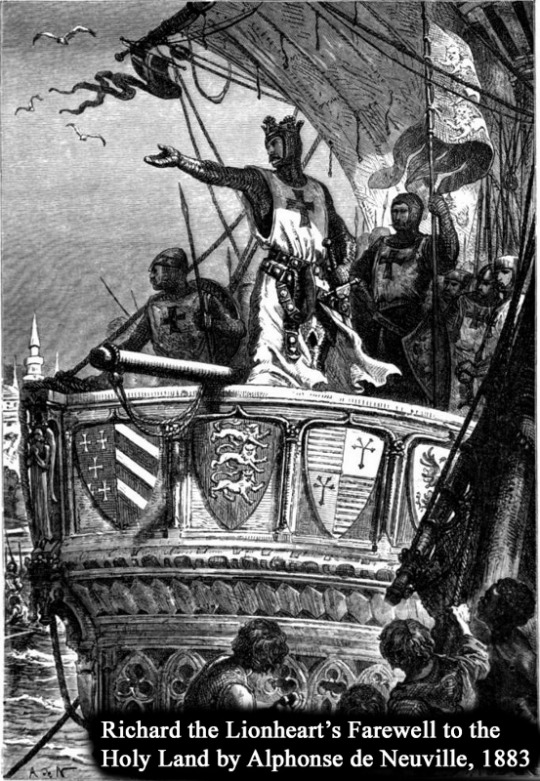
A warm welcome to Olivia Longueville and J.C. Plummer who have just released Robin Hood’s Widow, the second book in their Robin Hood Trilogy – a retelling of the Robin Hood story with an unusual and imaginative plot grounded in 12th century history.
On the night of October 9, 1192, two dozen men stealthily navigated through the ancient streets and alleyways of Acre towards the harbor. King…
View On WordPress
#Angevin Empire#Crusades#Eleanor of Aquitaine#Holy Roman Emperor Henry VI#King of England#King of France#medieval history#Philip II#Richard I#Richard the Lionheart#Saladin
0 notes